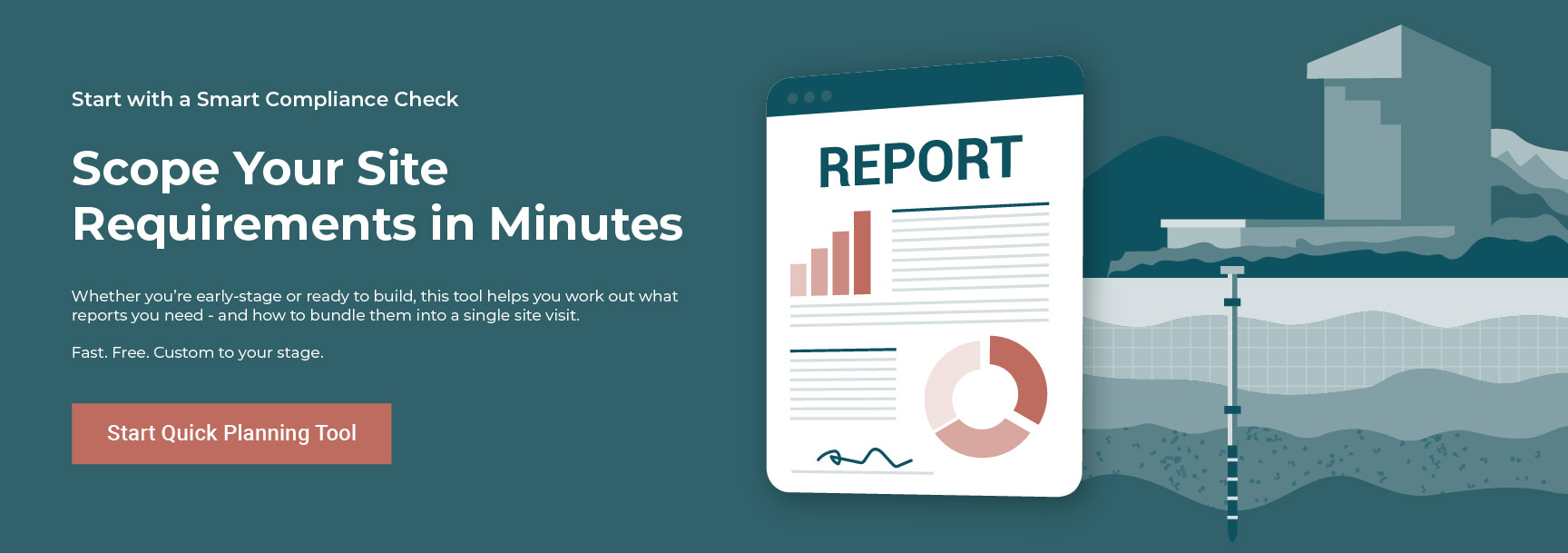Introduction
Managing asbestos contamination in soil presents a unique challenge in Australia’s built and industrial environment. Historically a widely used fire-resistant material, asbestos remains a latent risk in demolition sites, fill soils, industrial yards and brownfield developments. For property developers, construction companies, industrial operators and government authorities, the dual imperative of regulatory compliance and sustainable remediation means that traditional “dig-and-dump” approaches are no longer sufficient.
At Nova Group Pacific, we apply a future-ready, best-practice approach to asbestos soil remediation, combining robust assessment and remediation planning with sustainability-driven disposal, reuse or containment methods. In this article we review:
- how to deliver low-impact remediation;
- the regulatory and health-standards framework (including EPA licensing);
- and the sustainable disposal / reuse techniques gaining traction in Australia.
Low-Impact Asbestos Soil Remediation Strategies
Why “low-impact” matters
In large developments or industrial sites, simply excavating all soil and transporting it off-site can incur high costs, extended timelines and substantial environmental burdens (transport emissions, waste volumes, landfill demand). By contrast, low-impact remediation focuses on:
- targeted excavation based on detailed characterisation;
- on-site segregation and reuse where safe;
- encapsulation or containment of residual contamination;
- minimising disturbance of existing structures, vegetation or adjacent land uses.
Such strategies not only support sustainability goals, but also help maintain project budgets, timelines and stakeholder confidence. Sustainable practices—such as minimising transport and utilising local remediation facilities—are increasingly part of the decision-framework for asbestos soil remediation.
Step-by-step implementation
A robust low-impact remediation approach typically follows these stages:
- Preliminary and detailed site investigation. We conduct targeted drilling, soil sampling and asbestos fibre testing to map contamination zones and characterise soil types.
- Risk assessment and remediation action planning (RAP). Based on investigation data we prepare a RAP that considers likely pathways, exposure scenarios (workers, public), future land use, cost-outcomes and sustainability options.
- Enabling works and site controls. These include: dust-suppression (water sprays, enclosures), zoning of contaminated zones, access controls, worker PPE, air-monitoring.
- Excavation/segregation/containment. Rather than full removal of all soil, we may segment the site: higher-risk zones are excavated and removed, while lower-risk material may be contained in situ or treated. On-site containment or encapsulation may reduce waste and cost.
- Validation, reporting and clearance. Once remediation is complete, validation testing ensures soil meets required thresholds and clearance certificates support redevelopment under regulatory scrutiny.
- Ongoing monitoring and management. Where contamination remains in situ under an engineered control, we recommend scheduled inspections, dust/air monitoring and maintenance of cover systems to ensure long-term integrity.
Benefits to stakeholders
- Developers and construction companies: faster approvals, reduced delays, lower disposal costs, fewer unexpected surprises.
- Industrial operators and manufacturers: reduced liability, improved site readiness for redevelopment or sale.
- Government and local councils: increased sustainable land reuse, reduced burden on landfills, better public health outcomes.
- Real-estate investors and aged-care/childcare facility managers: reduced risk from latent contamination, improved safety, enhanced asset value.
Start with a Smart Compliance Check
Scope Your Site Requirements in Minutes
Whether you're early-stage or ready to build, this tool helps you work out what reports you need and how to bundle them into a single site visit.
Fast. Free. Custom to your stage.
EPA Licensing, Health Standards & Regulatory Compliance
Regulatory framework
In Australia, asbestos in soil is governed by multiple layers of regulation. Key elements include:
- The Contaminated Land Management Act 1997 and related regulations establish obligations on remediation of contaminated sites.
- The NSW Environment Protection Authority (EPA) sets standards for soil disposal, licensed facilities, transport of hazardous waste and environmental protection obligations.
- Occupational health and safety regulations including the Work Health and Safety Regulation 2011 and the Asbestos Code of Practice govern fibre-exposure prevention, safe handling and removal of ACMs.
Licensing and approvals
Projects involving asbestos-contaminated soil must ensure:
- The remediation contractor holds relevant licences (e.g., asbestos removal licences, waste transport licences).
- Waste must be transported to EPA-licensed facilities and manifest records kept.
- Validation results must be submitted to the EPA or regulatory body as part of site closure.
- If on-site containment or reuse is proposed, the RAP must address long-term management and be acceptable to regulators.
Health-standards and exposure control
Workers and the public must be protected from fibre release. Key controls:
- Air-monitoring before, during and after remediation.
- Use of safe removal protocols: negative-air enclosures, sealed bags, wet cutting/dust suppression.
- Validation of airborne fibre levels must indicate “clearance” and meet designated thresholds.
- Maintenance of records for health-monitoring and regulatory audit.
Emerging regulation
Regulators are increasingly focusing on:
- Lowering acceptable contamination thresholds for asbestos in soil.
- Requiring more rigorous post-remediation monitoring and long-term management.
- Encouraging sustainable reuse of remediated soils under controlled conditions to reduce waste and landfill burden.
For stakeholders this means that early engagement with remediation specialists helps navigate this regulatory complexity efficiently and with minimal risk.
Sustainable Disposal and Reuse Methods in Asbestos Soil Remediation
The sustainability imperative
Traditional remediation emphasises “remove everything and haul away”. Increasingly, clients expect environmentally sustainable solutions that:
- minimise carbon emissions (transport and landfill);
- conserve resources (reuse of treated soils);
- reduce waste volumes to landfill;
- support circular-economy outcomes.
Nova Group Pacific’s published insights highlight the integration of approaches such as on-site containment and reuse of treated soils wherever safe and regulatory-approved.
Emerging treatment and disposal techniques
Some of the more advanced or future-ready methods include:
- Soil washing: separation of asbestos fibres from soil particles. Suitable where soil volumes are large and remediation budget allows.
- Encapsulation / capping: residual contamination is capped with clean fill, asphalt or concrete, preventing exposure pathways while allowing redevelopment above.
- On-site reuse of treated soils: Where validation demonstrates safety, treated soils can be reused in landscaping, backfill or non-sensitive zones—reducing disposal cost and environmental footprint.
- Reduced-haul strategies and local licensed facilities: Using closer disposal sites and optimised transport logistics to reduce emissions and cost.
- Long-term monitoring and performance auditing: Ensuring that remedial outcomes remain effective and sustainable over decades.
Practical considerations for clients
When evaluating sustainable disposal and reuse options ask:
- Has the soil been characterised accurately (fibre count, asbestos type, soil matrix)?
- Is the proposed reuse permitted under the RAP and regulatory approvals?
- What are the maintenance and monitoring obligations if soils remain on-site under containment?
- How does the disposal or reuse option affect project timeline, budget and regulatory liability?
- Are there opportunities for cost-reduction without compromising compliance or safety?
How Nova Group Pacific Delivers Future-Ready Remediation
At Nova Group Pacific we bring together specialist environmental scientists, occupational hygienists and licensed asbestos assessors to deliver a full-spectrum service from investigation through to validation.
Key features of our offering:
- Integrated service suite: including contaminated land assessment & remediation, asbestos & HAZMAT management, soil & waste classification, construction environmental compliance monitoring.
- Licence and accreditation: Our team hold SafeWork NSW licences for asbestos supervision and we operate under ISO 9001, ISO 14001 and ISO 45001 certified systems.
- Tailored solutions: For developers, industrial operators, councils and large-scale projects we tailor remediation plans aligned with sustainability goals and compliance risk profiles.
- Cost-effective outcomes: By blending targeted remediation, sustainable disposal or reuse, and efficient project management we help clients maintain budget and timeline integrity.
- Clear client-facing communication: We provide detailed reporting, clear pathways to approval and ongoing monitoring support to protect your project value and compliance.
We encourage you to visit our Asbestos in Soil service page and explore our Best Practices for Asbestos Soil Management in Developments article for further insights.
Conclusion
Asbestos soil remediation is at the confluence of compliance, health-risk management and sustainability. For property developers, construction companies, industrial operators, councils and other stakeholders, achieving a future-ready outcome means embracing low-impact remediation methods, staying ahead of EPA licensing and health-standards, and proactively integrating sustainable disposal or reuse strategies.
By partnering with Nova Group Pacific you gain access to proven expertise, regulatory insight and sustainable remediation pathways that deliver both compliance and long-term asset value.
Ready to take action? Contact us today to schedule a site assessment and explore how our team can support your project’s asbestos soil remediation requirements with a sustainable, compliant and future-ready approach.












.png)







